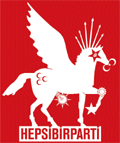 The last few days, I was busy seeing friends and exhibitions:
The last few days, I was busy seeing friends and exhibitions:
1. Dali Universe @ County Hall Gallery
This was a great exhibition of his sculptures. Here's a little glossary...
Melting clocks
The famous melting clocks represent the omnipresence of time, and identify its mastery over human beings. The inspiration for this concept came from a dream of runny Camembert one hot august afternoon. These symbols represent a metaphysical image of time devouring itself and everything else.
Crutches
The crutch is one of Dali’s most important images and features in many of his works. It is first and foremost a symbol of reality and an anchor in the ground of the real world, providing spiritual and physical support for inadequacy in life. The crutch is also the symbol of tradition, upholding essential human values.
Drawers
The drawers arise from their Freudian explanation as a representation of the concealed sexuality of women. Dali portrays many of the drawers to be slightly ajar, indicating that their secrets are known  and no longer to be feared.
and no longer to be feared.
Elephants
Dali’s elephants are usually depicted with long, multi-jointed, almost invisible legs of desire, and carrying objects on their backs, which are also full of symbolism. These elephants represent the future and are also a symbol of strength. They are often shown carrying obelisks, which are symbols of power and domination, and not without phallic overtones. The weight supported by the animals spindly legs shows weightlessness, only made more significant by the burden on their backs.
Snails
 The snail occupies an important place in the Dalinian universe as it is intimately linked to a significant event in Dali’s life – his meeting with Sigmund Freud. As Dali believed that nothing occurred to him simply by accident, he was captivated when he saw a snail on a bicycle outside Freud’s house. He connected the snail with a human head, more particularly Freud’s head. As with the egg and lobster, the hard shells and soft interiors of snails also fascinated Dali, and their geometry of their curves enchanted him.
The snail occupies an important place in the Dalinian universe as it is intimately linked to a significant event in Dali’s life – his meeting with Sigmund Freud. As Dali believed that nothing occurred to him simply by accident, he was captivated when he saw a snail on a bicycle outside Freud’s house. He connected the snail with a human head, more particularly Freud’s head. As with the egg and lobster, the hard shells and soft interiors of snails also fascinated Dali, and their geometry of their curves enchanted him.
Eggs
The egg is another favourite Dalinian motif, given the duality of its hard exterior and soft interior. Dali links the egg to pre-natal images and the intra-uterine universe, and thus it is a symbol of both hope and love.
Ants
When Dali was five years old, he saw an insect that had been eaten by ants and of which nothing remained except the shell. The swarming ants in Dali’s pictures and sculptures are references to death and decay, and are reminders of human mortality and impermanence. They are also said to represent overwhelming sexual desire.
Grasshoppers
Dali had an irrational fear of grasshoppers, stemming from his childhood torment by other children, who often threw grasshoppers and other insects at him. When they appear in Dali’s work, grasshoppers are used as a symbol of destruction, waste and fear. Dali represents them with a fearful nature, as large and intimidating in comparison to the other figures, and they are often shown in the act of eating the main subject of the work.
and some quotes:
The important thing is to provocate hallucinations and dreams without drugs, and that's what I do. My paintings are hallucinations. The human body is full of secret drawers which only psychoanalysis is capable of discovering.
Don't be afraid of perfection. You will never reach it!
There is almost always something holy about mistakes. Never try to correct them. What we see isn't in things, but in our souls.
Now I am going to fill it with drawers because the only difference between the immortal Greece and the world today is Sigmund Freud. Gala transforms my madness into a rational organization of a critical type.
2. Dutch Portraits @ National Gallery
Following its independence from Spain in the 17th century, the Dutch Republic experienced an era of unprecedented wealth, the so-called 'Golden Age.'
Thanks to the successful activities of its merchants and entrepreneurs - and in sharp distinction to the rest of Europe - a new middle-class elite emerged. Its members became the dominant force in local government and civic institutions, and as a result became the new principal patrons of the arts. Portraits were especially suitable to express their newly found self-confidence and desire for representation, and artists responded by developing new types of portraits to meet the demands of this clientele.
This exhibition includes some 60 works, all painted between 1600 and 1680. Exhibits range from small, individual portraits meant for the private home to the large-scale group portraits of members of charitable institutions and civic guards.
The one on the left is a 1599 painting by Jan van Ravesteyn: 'Portrait of Hugo Grotius'. By the time this portrait is made, Hugo is only 16 and yet is thoroughly involved in politics. He is known to be the father of international law (at least in the Netherlands)...
















































